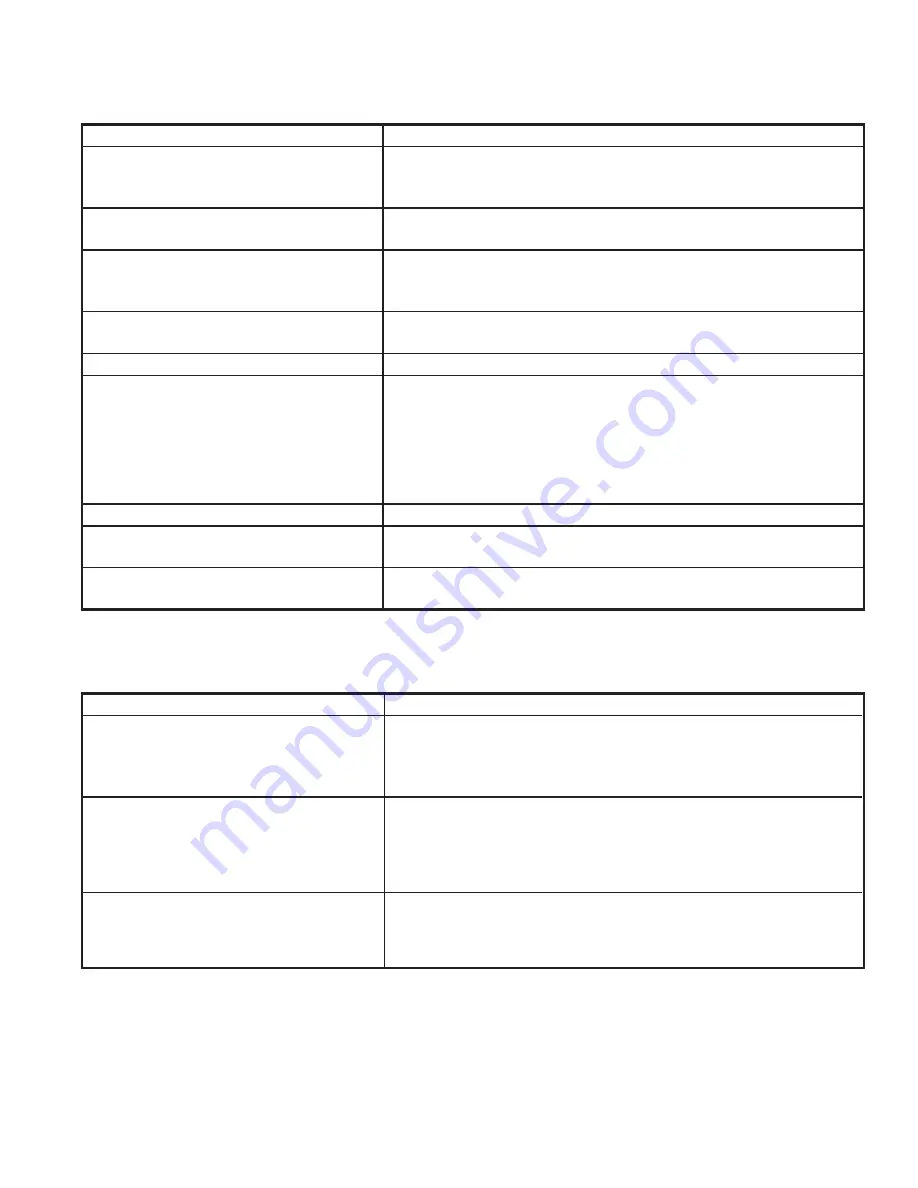
SURVIVAIR Opti-Fit
™
Convertible Facepiece
34
XIV. RESPIRATOR INSPECTION TABLES
General Inspection Table
The following table lists general inspection steps to be followed for all respirator configurations (APR, SAR, PAPR).
COMPONENT
LOOK FOR
FACEPIECE LENS
1. Nicks, scratches, or abrasions that could impair visibility.
2. Deep gouges or cracks which could reduce impact resistance.
3. Anti-fog coating in need of replacement.
FACEPIECE RIMS
1. Deformed, cracked, or broken.
2. Loose screws. Do not overtighten.
FACEPIECE SKIRT
1. Cuts, gouges, or punctures.
2. Tears or nicks in the sealing area.
3. Deterioration from age, heat, or contamination.
FACEPIECE HEADSTRAP
AND BUCKLE STRAPS
1. Abrasions or nicks.
2. Deterioration from age, heat, or contamination.
FACEPIECE BUCKLE
Crushed, bent, broken, or corroded.
FACEPIECE INLET NOZZLE
AND NOZZLE ADAPTER
1. Heat or impact damage.
2. Nicks, cracks, tears, or creases in the exhalation valve. Remove the valve
cover to inspect the exhalation valve.
3. Nicks, cracks or dents in the exhalation valve seat.
4. Sticking exhalation valve. Exhale a few times to test. The valve must close
after each exhalation. Valves that fail to close must be replaced.
5. Cuts, nicks, abrasions, or excess stretching to the Nozzle Adapter O-rings.
O-RINGS/TWIN SEALS
Cuts, nicks, abrasions, or excess stretching.
CARTRIDGE CONNECTORS
1. Cracks, heat, or impact damage.
2. Cuts, nicks, or abrasions on connector sealing flange.
HEADNET
1. Signs of deterioration, weakening, and wear in the the Headnet and straps.
2. Unraveled or loose stitching.
Additional Inspection Table for Supplied Air Respirators (SAR)
For supplied air respirators (SAR), the following inspection steps should be followed in addition to the general inspection
steps listed in the General Inspection Table above.
COMPONENT
LOOK FOR
BREATHING TUBE
(ALL CF-SAR CONFIGURATIONS)
1. Cuts, nicks, cracks, punctures, or tears that may reduce the level of protection.
2. Age or heat induced cracking, checking, or hardening.
3. Crushed, broken, or cracked connectors.
4. Tube is securely attached to the connectors and the hose clamps are tight.
Air Line Hoses (all CF-SAR configurations)
1. Fittings corroded, cracked, or leaking.
2. Cuts, nicks, cracks, punctures, age or heat induced cracking, checking,
abrasions, blistering, holes, crushing, kinking, or hardening.
3. Tightness of connectors and quick couplers.
4. Swivel nut gaskets in place and undamaged.
Belt (all CF-SAR configurations)
1. Webbing color change, excessive wear, fraying, cuts, nicks, or broken
stitching.
2. Buckle damaged or corroded.
3. Loose hardware.




































